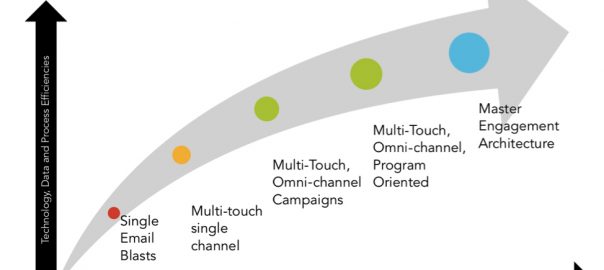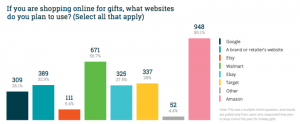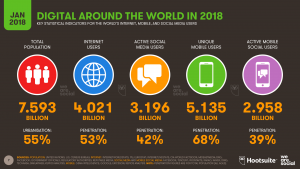As a marketer, campaigns are the most important tools in the demand generation marketer’s toolkit. Campaigns enable us to engage, capture and nurture leads, ultimately translating them into revenue. Modern marketers understand that today’s customer is smart, and expectations are high for their campaign experience, but how can you enhance the campaign experience to influence results? What is the progression of increasingly sophisticated campaigns and how do we become more proficient at creating them? What’s the path to campaign maturity?
At The Pedowitz Group, we define a campaign as a series of tactics, delivered through one or more channels, tied to a single theme, one or more offers, and with a specific goal such as engagement, acquisition or nurture. Campaigns feed into larger program initiatives that tie to business objectives and revenue.
Marketing organizations are purchasing marketing automation in droves. In fact, there are nearly 11 times more B2B organizations using marketing automation now than in 2011. (SiriusDecisions “B-to-B Marketing Automation Study 2014) Marketing automation enables personalized campaign experiences across devices and channels, but technology is not the only answer. Most organizations who invest in marketing automation tend to follow a fairly distinctive path to combining technology features with strategic enhancements to their campaigns. Below is a chart that describes that path:

The maturity model is influenced by technology data and process efficiencies as well as content strategy and customer centricity. Balancing both the strategic axis and the technical axis projects marketers into mature campaigns that generate revenue. Marketing automation technology alone doesn’t yield campaign results, but is absolutely necessary for success.
- Single email blasts – After marketing automation technology is implemented, most organizations conduct a few single email sends. Either simply because they have implemented campaigns directly into the marketing automation system that they launched previously or they have a deficit of the right content or offers available for customer-centric campaigns.
- Multi-touch – Moving from a single touch experience, we see multi-touch, yet single channel initiatives. This campaign typically manifests into a 3 or 4-touch email nurture and may have some rudimentary segmentation. We’ve moved from single touch to a multi-touch experience. Marketers may stay in this channel for some time as they build their nurturing ecosystem in their marketing automation platform.
- Multi-touch, omnichannel – As marketers fill their email nurture campaign “pipeline” they may begin to see results that aren’t as stellar in the single channel. The multi-touch email nurture ecosystem needs a feeder besides segments and lists already in the database. More inbound channels are added to campaign initiatives to fill the top of the funnel and add volume. Channel may be selected to also support persona-specific channel preferences. Marketers well into this stage will also utilize more MAP capability to enhance the campaign experience, for example customer does “x” automatically send “y.”
- Multi-touch, omni-channel, program-oriented – Multi-touch and omni-channel campaigns can be easily confused with program-oriented initiatives. Just because your campaigns have a number of channels, experiences and paths, does not connect those campaigns to a business objective. Many marketers dive into campaign planning without thinking about business objectives that tie to revenue. Program oriented campaigns are by nature multi-channel and have a very specific business goal. With a common objective, we also start to see an expansion in the Boolean logic in campaign complexity. MAP features and functionality are expanded and users become advanced users in the platform.
- Master Engagement Architecture – A Master Engagement Architecture is an operationally strategic map of how a company plans to engage their various audiences across integrated tactics to meet their marketing objectives, according to their go-to-market strategy. It defines what audiences will be communicated with uniquely vs. collectively and how the company will engage with them in various channels along the buying journey. Think of an MEA as a collection of programs. Most MEAs take organizations 6+ months to develop in the short term and are leveraged as a foundation for evergreen campaigns with agile campaigns sprinkled on top for time sensitive initiatives.
Based on the above, how mature is your demand generation organization? What can you do to increase the campaign design capability level of your team? How will it improve your customer experience? Tell us in the comments below.
Business & Finance Articles on Business 2 Community(74)
Report Post






